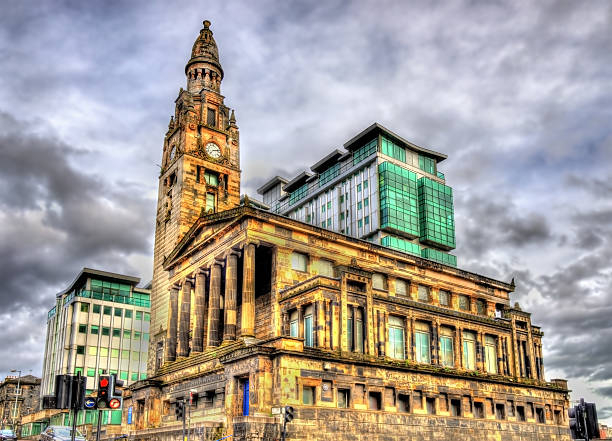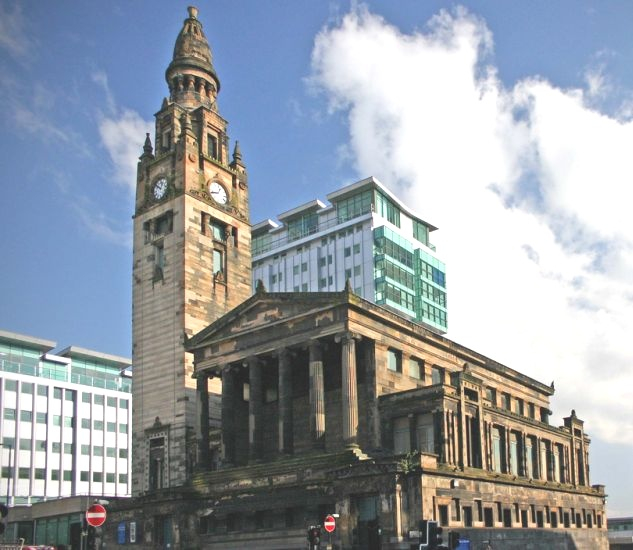St. Vincent Street Church
Although Glasgow is rightfully recognized for the work of Charles Rennie Mackintosh, it also produced another world-class architect in Alexander "Greek" Thomson at an earlier time. Although his ideas were once seen as tough and demanding, public opinion has warmed to his own style of architectural eclecticism. Thomson never left Britain, and despite his appellation "Greek", he used published materials depicting Egyptian and Indian architecture as well as those depicting classical structures. Unlike most of his British colleagues, he was willing to experiment boldly with established forms, adding daring aspects and compositions that are most closely related to the work of Karl Friedrich Schinkel in Berlin.
Despite being erected on a challenging, sloping location, St. Vincent Street Church (finished in 1859) displays Thomson at his peak. It is a work of architectural massing that elevates the typical classical porticoed form onto a massive two-story base. An amazing tower, positioned in strong asymmetry, combines Assyrian and Egyptian elements and culminates in a fluted egg-shaped dome of Indian origin. While the front of the building appears almost unnervingly huge, the utilization of top-lit rooms lends the interior a bewitching lightness. This is a structure where every aspect has been examined from a distinct perspective, with a range of finely resolved characteristics such as attenuated cast-iron columns culminating in capitals that subvert the classic acanthus shape.
Location: 265 St Vincent Street, Glasgow G2 4, Scotland















